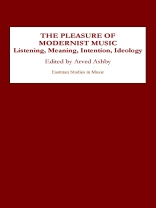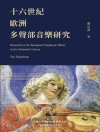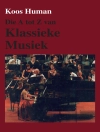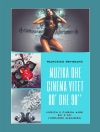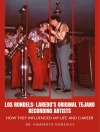An exploration of the meaning of ‘modernist’ music.
The debate over modernist music has continued for almost a century: from Berg’s Wozzeck and Webern’s Symphony Op.21 to John Cage’s renegotiation of musical control, the unusual musical practices of the Velvet Underground, and Stanley Kubrick’s use of Ligeti’s Lux Aeterna in the epic film 2001. The composers discussed in these pages — including Bartók, Stockhausen, Bernard Herrmann, Steve Reich, and many others — are modernists in that they are defined bytheir individualism, whether covert or overt, and share a basic urge toward redesigning musical discourse.
The aim of this volume is to negotiate a varied and open middle ground between polemical extremes of reception. The contributors sketch out the possible significance of a repertory that in past discussions has been deemed either meaningless or beyond describable meaning. With an emphasis on recent aesthetics and contexts — including film music, sexuality, metaphor, and ideas of a listening grammar — they trace the meanings that such works and composers have held for listeners of different kinds. None of them takes up the usual mandate of ‘educated listening’ to modernist works: the notion that a person can appreciate ‘difficult’ music if given enough time and schooling. Instead the book defines novel but meaningful avenues of significance for modernist music, avenues beyond those deemed appropriate or acceptable by the academy. While some contributors offer new listening strategies, most interpret the listening premise more loosely: as a metaphor for any manner of personal and immediate connection with music. In addition to a previously untranslated article by Pierre Boulez, the volume contains articles (all but one previously unpublished) by twelve distinctive and prominent composers, music critics, and music theorists from America, Europe, Australia, and South Africa: Arved Ashby, Amy Bauer, William Bolcom, Jonathan Bernard, Judy Lochhead, Fred Maus, Andrew Mead, Greg Sandow, Martin Scherzinger, Jeremy Tambling, Richard Toop, and Lloyd Whitesell.
Arved Ashbyis Associate Professor of Music at the Ohio State University.
Содержание
Intention and Meaning in Modernist Music — Arved Ashby
The End of the Mannerist Century — William Bolcom
A Fine Analysis — Greg Sandow
In Memory of a Receding Dialectic: The Political Relevance of Autonomy and Formalism in Modernist Musical Aesthetics — Martin Scherzinger
Twentieth-Century Tonality, or, Breaking Up Is Hard to Do — Lloyd Whitesell
‘Tone-Color, Movement, Changing Harmonic Planes’: Cognition, Constraints and Conceptual Blends in Modernist Music — Amy Bauer
Sexual and Musical Categories — Fred Maus
Listening to Schizophrenia: The Wozzeck Case — Jeremy Tambling
The Musician Writes: The Deaf Man Looks On? — Pierre Boulez
‘Are You Sure You Can’t Hear It?’: Some Informal Reflections on Simple Information and Listening — Richard Toop
A Fine Madness — Greg Sandow
‘One Man’s Signal is Another Man’s Noise’: Personal Encounters with Post-Tonal Music — Andrew Mead
The ‘Modernization’ of Rock & Roll, 1965-75 — Jonathan W. Bernard
Refiguring the Modernist Program for Hearing: Steve Reich and George Rochberg — Judith Lochhead
Modernism Goes to the Movies — Arved Ashby
